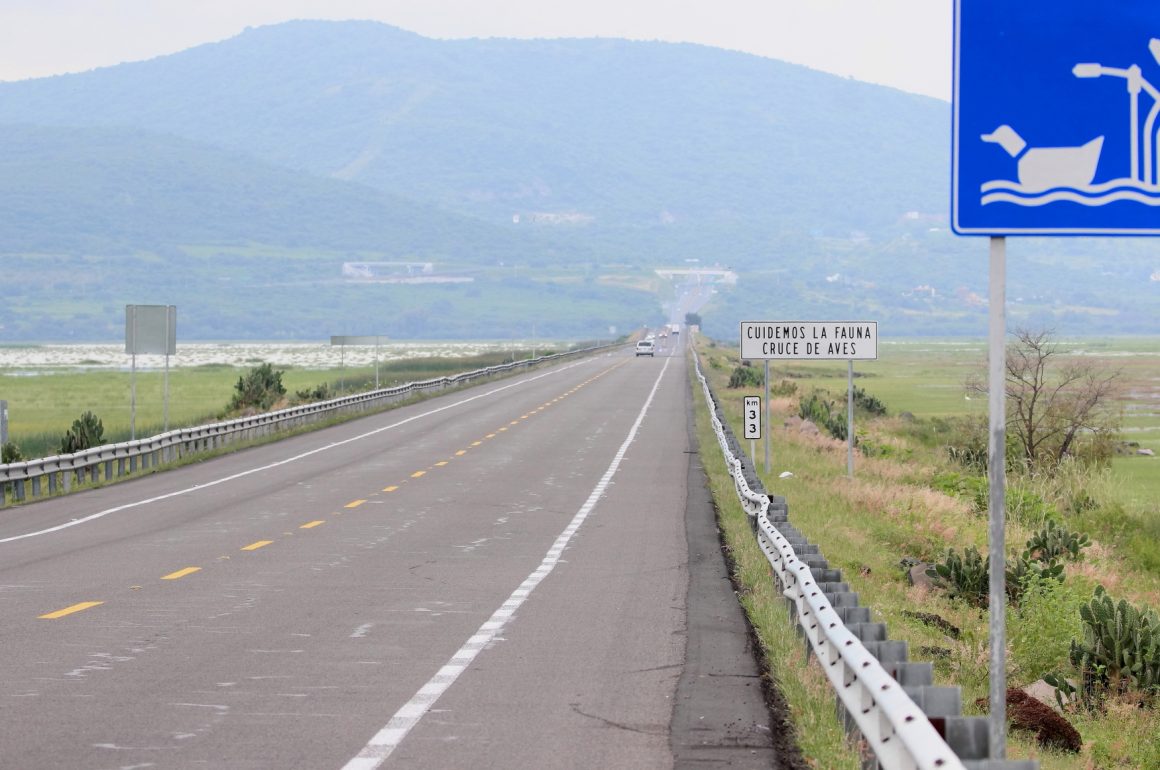
“Let’s care for wildlife. Bird crossing.”
One of the things I enjoy about going into nature with other birders is that we are all so darned curious. We say we go to see birds. But give us a half hour, and we will surely go down some rabbit hole involving interesting insects, wildflowers, or geological formations. Or a literal rabbit hole, should we happen upon one. Each person has their own favorite distraction, but each of these enrich all of us.
My own non-birding passions are the plants we find, and especially, the overall environmental systems that impact the birds we seek. This has become more marked as we fell into, and now are climbing out of, a historic drought here in central Mexico. Which is why I just had to drive north to Mexico’s second-largest lake, Lake Cuitzeo, to see how far its recovery has progressed. Would our super-abundant 2024 rainfall be reaching the entire lake system yet?
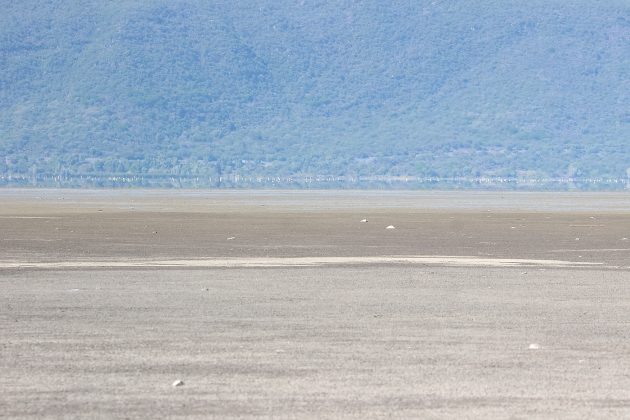
The “deepest” part of “Lake” Cuitzeo in July, 2023, at the height of our “rainy season”
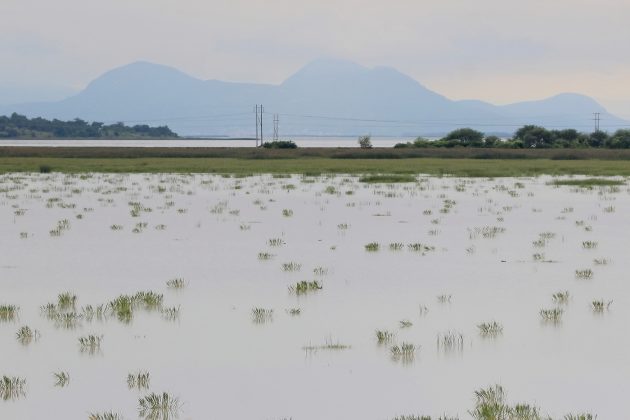
A look towards that eastern section of the lake in September 2024
That one fundamental question led to a further series of questions. Would the thousands of birds that flew south late last summer, only to find a dry lakebed, try their luck there again this year? Would their populations still be healthy? What about the recovery of our crucial reedbeds, so recently devastated by drought and fire? How about creatures like the lake’s water snakes which, unlike migratory birds, cannot fly away in search of a substitute body of water? And would the fishing industry of the lake’s towns show any sign of recovery?
I cannot speak yet to the issue of fishing on the lake. But I can, indeed, confirm that the lake is making a solid comeback. The western end, which mostly receives its water once the eastern side has become deep enough to spill through the culverts under the two north-south causeways, is indeed beginning to fill up. Since it takes quite a while for rainwaters to filter through the soil, into waterways, down those waterways, and into the lake by the east-to-west route, the lake will no doubt continue to fill long after our summer rains end.
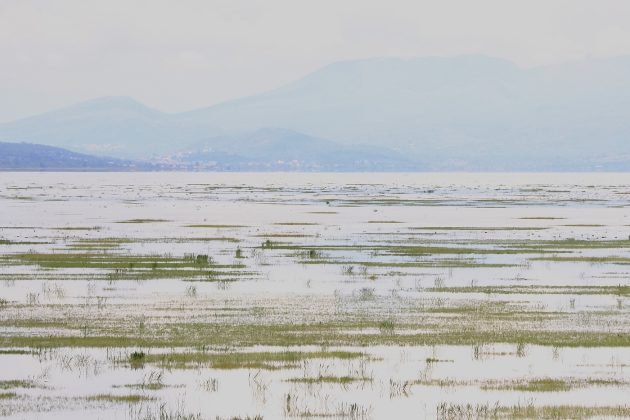
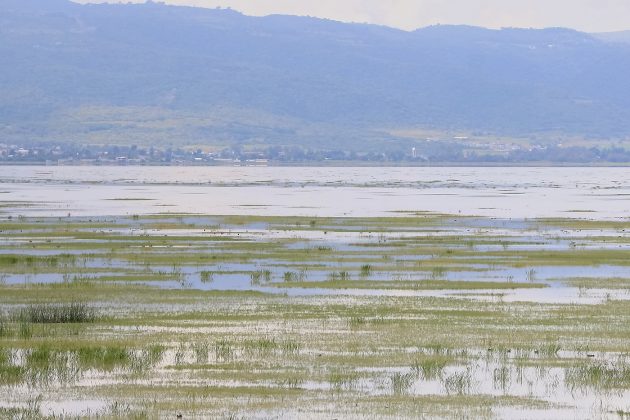
And everything points to our waterfowl and shorebirds turning up in good numbers as well, in spite of their sad experience last winter. My mid-September visit showed that many Blue-winged Teals and Northern Shovelers had arrived, with more no doubt arriving every day. As I watched flocks of Shovelers fly down to the lake surface, it made me wonder if some of them weren’t making their first appearance before my eyes.
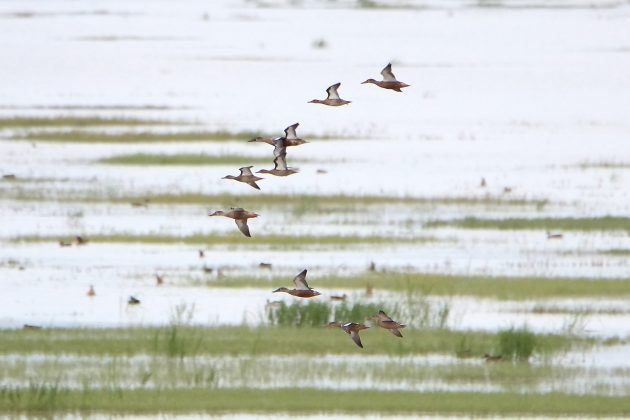
Northern Shovelers lowering onto the lake
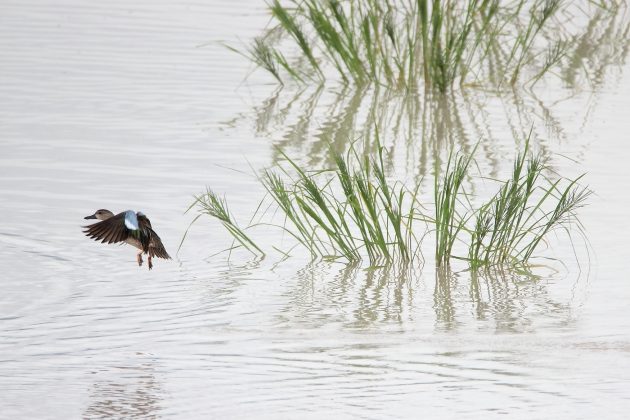
A Blue-winged Teal doing the same
While many of our winter duck species have yet to turn up, there seemed to be representatives of most of our winter shorebirds already present. I saw lots of Long-billed Dowitchers, with the usual admixture of similar-looking Stilt Sandpipers. At least one Pectoral Sandpiper turned up, although it will presumably soon continue traveling further south. There were definitely some Western and Least Sandpipers present, as well as a few remaining Baird’s Sandpipers which will also soon continue to fly further south. Several Soras worked their way through the recovering reedbeds, as well as one apparent Virginia Rail. Yellowlegs, both Greater and Lesser, have shown up in good numbers. Unusually, several Willets were present, although these should soon depart for the coast.
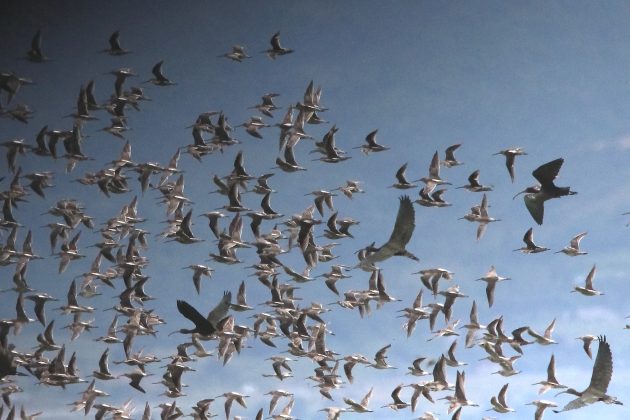
Lots of Long-billed Dowitchers… with some White-faced Ibises and Yellowlegs for good measure
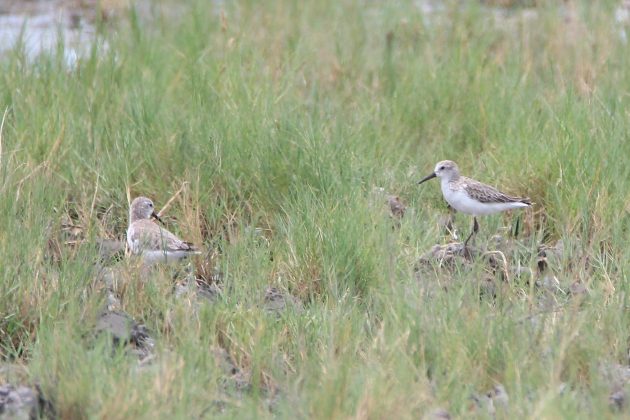
Western Sandpipers (black legs)
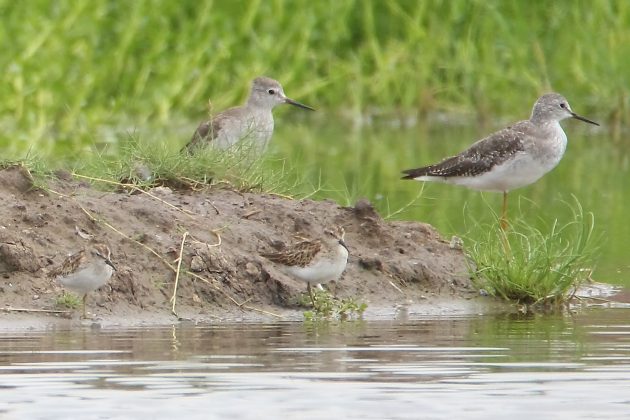
Least Sandpipers (yellow legs) and Lesser Yellowlegs; pardon the redundancy
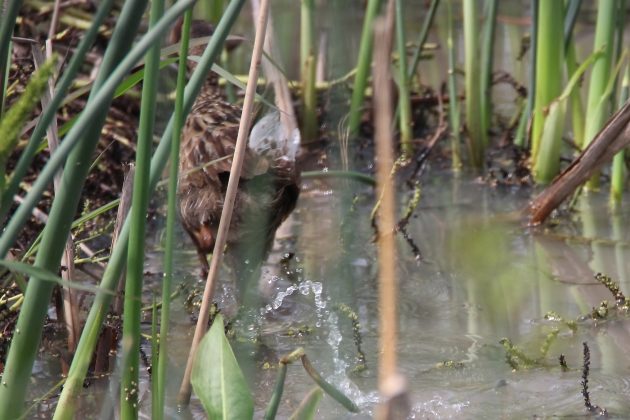
That Virginia Rail, making a quick getaway
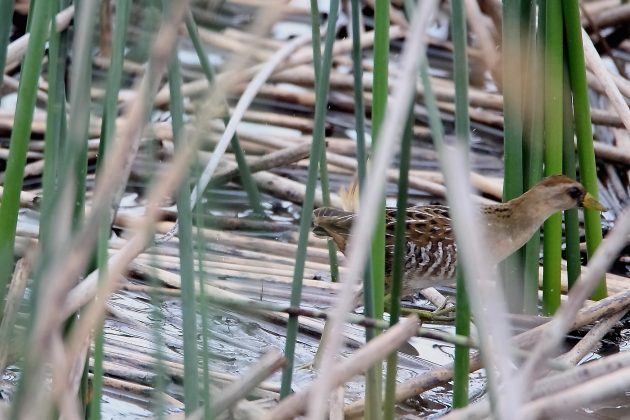
a Sora, doing the same
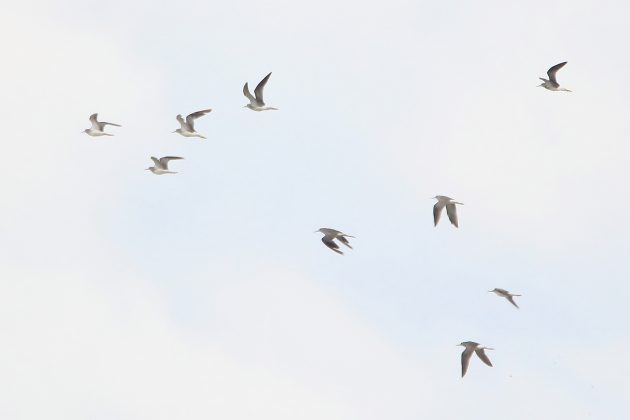
Recently arrived (or arriving) Lesser Yellowlegs; Greater Yellowlegs were also abundant elsewhere.
Ruddy Ducks and Clark’s Grebes are usual residents on the lake. Their need for deeper water, however, forced them to abandon it when the lake almost disappeared. They are now back, I’m delighted to say.
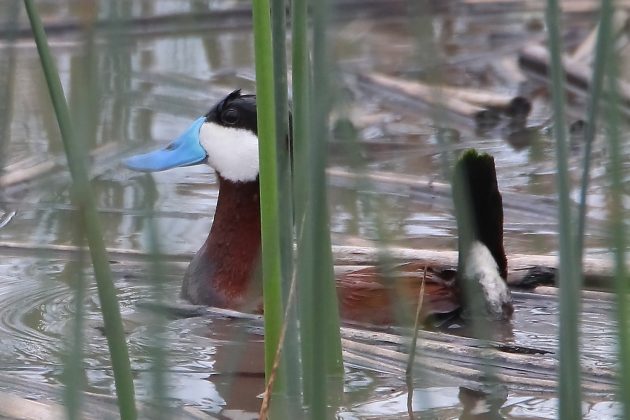
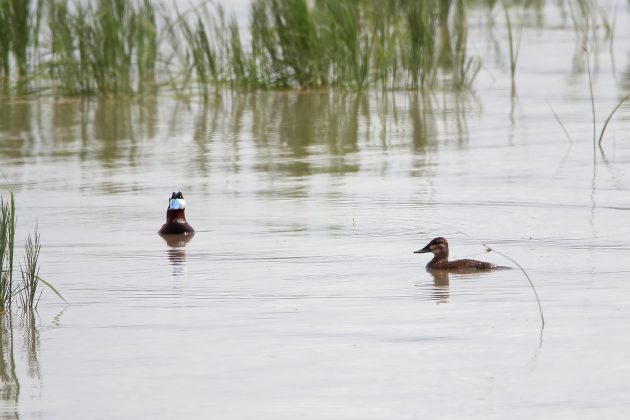
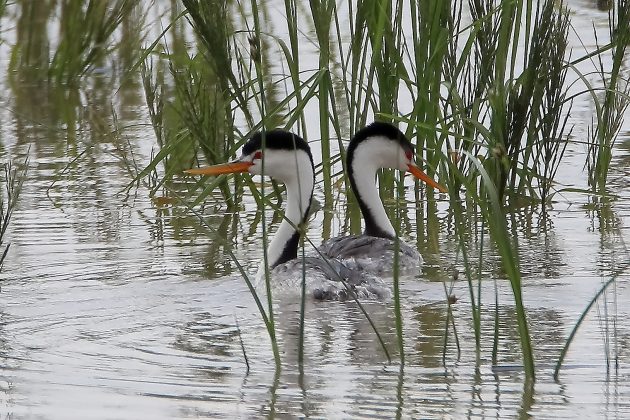
I did see at least one water snake on this outing. I also saw a spider eating a butterfly, which seemed unusual. As to my other questions, the reedbeds are making only a slow recovery after they dried up and were burned. The cattails seem to be especially slow-growing. And I will have to wait until later in the winter season to see if our waterfowl populations look as impressive as they once did. I’m crossing my fingers.
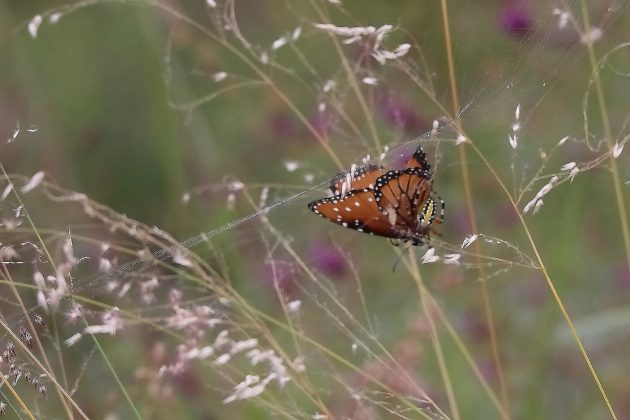













The resilience of wetland species is astounding. Drought may not be so bad (drainage is a whole other story). Glad to read you have your lake back!